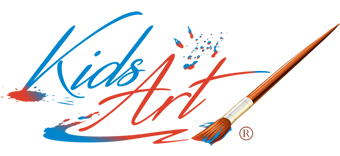“Gauguin Portraits” at The National Gallery until 26 January 2020
Paul Gauguin, ‘Christ in the Garden of Olives’, 1889
Who is Gauguin?
Paul Gauguin (1848 – 1903) Father of Modern Art, with hyper-real colours, exaggerated body proportions, strong contrasts and mystical symbols. A banker turned artist, he abandoned his middle-class life and family and sailed to Tahiti seeking primitive beauty. He dreamed of pursuing art in paradise. French born, but spending early childhood in Peru he loved exotic and distant places. Like van Gogh he was unknown in his lifetime.
Gauguin as Jesus
Gauguin’s Portraits are often of himself – Christ in the Garden of Olives (4)* shows him as Jesus just before betrayal – his lack of artistic success felt like the suffering of Jesus and he hoped a familiar image would communicate his sorrow. In Self Portrait with Yellow Christ 1891 (5)* he paints himself as Jesus on the cross, as himself in the foreground, and on the strange pot in the corner. Gauguin thought the world could be experienced only subjectively so logically everything an artist creates is a “self portrait”. In Self Portrait 1890 (9)* he is a “savage from Peru” – he claimed Inca heritage (falsely – his Peruvian ancestors were colonialists) and loved his aquiline nose.
Untruths
Gauguin dreamed that in Tahiti he would find an unspoiled Paradise, but it was already Westernised by Missionaries who brought European dress codes and diseases – the simple lifestyles and naked bodies Gauguin painted did not exist, and he imported the idols he painted. Arii Matamoe 1892 (32)* shows the dead Tahitian king as John the Baptist – Gauguin’s trip was partly funded by the French government in return for recording local customs, and when Gauguin attended the dead king’s funeral the proceedings looked so dull and familiar he simply reinvented them – there was no custom in Tahiti to show a dead king as a trophy head, but it made an exotic picture.
Gauguin was happy to alter truth to promote Tahiti as paradise but like van Gogh was incapable betraying his unique vision of art by of painting as patrons wished – in 1889 he was commissioned to paint the daughter of a Breton aristocrat and could have launched his career as a society portraitist. His painting of Therese-Josephine Young Breton Girl (17)* shows the her scowling, bizarrely placed next to an idol gushing menstrual blood – the commission was refused.
Great Art Bad People
In Merahi metua no Tehamana 1893 (36)* Gauguin’s “wife” Teha’amana confronts us, she was 13 when they “married”, and was one of several young wives – the National describes the girls as “young women” not children and although in Tahiti girls did then sometimes marry age 13, in Gauguin’s native France it was unacceptable, and the Tahitians wouldn’t have allowed their daughters to marry a married man had they known.
Still Life with Hope 1901 (48)* shows sunflowers, a “portrait” in that it represents van Gogh – Gauguin’s relationship with van Gogh was disastrous. They briefly lived together fulfilling van Gogh’s dream of an artists colony, but fell out and Gauguin left. Distraught Van Gogh had a break down and begged Gauguin to return – he never did, but 10 years after van Gogh’s death he asked for sunflower seeds, which he grew and painted, perhaps an apology, too late.
Tips for Visiting with Kids
1 Take a sketchbook! Kids recall far more if they have really looked closely and drawing is a brilliant way to look closely.
2 Use the free guide: pictures numbered and explained, with maps/chronology of Gauguin in Europe, Polynesia and Tahiti.
3 Talk about the paintings – what does Gauguin achieve by making colours much brighter than they really are?
4 For older children, discuss how far we should enjoy the great art of bad people.
Please email photos of your children’s sketches to info@kidsartuk.com
prizes available and a chance to feature on the website!
Details of the Exhibition, which is organised across 7 Rooms, here!
*Numbers refer to the National Gallery’s numbering of paintings in the exhibition
![]()
KidsArt!™ teaches children art and art appreciation, publishes reviews/news of London art exhibitions, and runs the KidsArt! Store. To view who we are and what we do, click here
Copyright © KidsArt Limited, 2019. Image: Norton Museum of Art, Gift of Elizabeth C. Norton © Norton Museum of Art.



